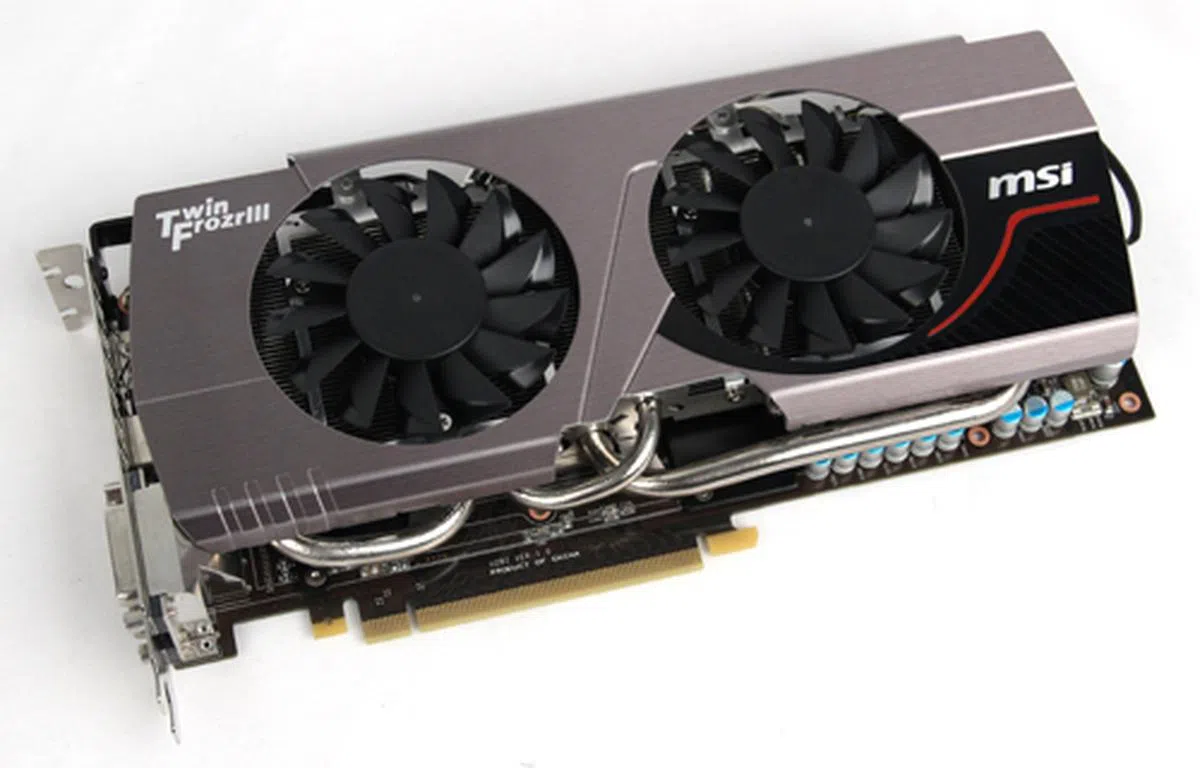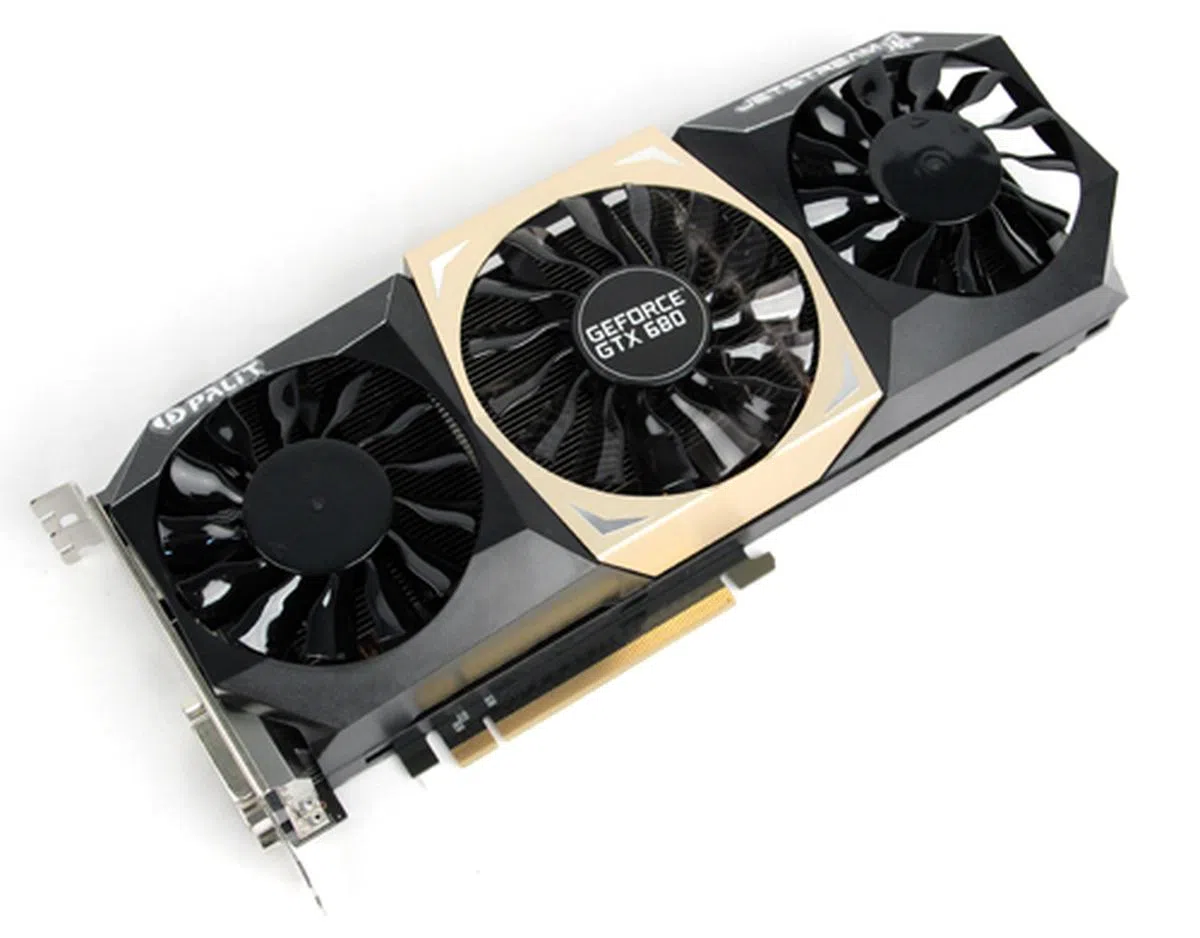Overclocked NVIDIA GeForce GTX 680 Duel - Palit vs. MSI
Two cards enter, one card leaves: two factory-overclocked GeForce GTX 680 graphics cards duke out over a comprehensive set of benchmarks and games to determine which deserves your hard earned cash. Fight!
High-End Turbo Charging
Back in March we were wowed by NVIDIA's first 28nm Kepler-based GPU, the GeForce GTX 680. After losing out to AMD on being first to market with its 28nm chip, NVIDIA delivered a stunning riposte with the excellent performance scores and efficient power consumption of the GTX 680, leaving AMD reeling, and securing NVIDIA a stranglehold on the enthusiast graphics card market. In fact, in an attempt to stay competitive, AMD first announced price cuts on its AMD Radeon HD 7970, and then followed that by announcing a relaunch of the card with higher core clock speeds.
We've now seen most of NVIDIA's add-in partners releasing their own souped versions of NVIDIA's flagship model with factory overclocking and custom coolers, all designed to deliver even better performance and improved efficiency. Today we're taking a look at two of those cards.
Here are the contenders:

Palit Vs MSI: Two cards enter, one card leaves. Who will it be? Read on to find out.
Palit GeForce GTX 680 Jetstream 2GB DDR5
Palit's GeForce GTX 680 JetStream features a triple-fan cooler and a boost in core clock speed from 1006MHz to 1085 MHz.. Memory clock speed has also been increased from 6008MHz DDR to 6608MHz DDR. In terms of pricing, Palit's offering will set you back S$769, just S$20 more than the S$749 for a reference based design.

Under Palit's triple fans is a large aluminum fin array connected to a number of copper cooling pipes. The shroud is mostly plastic with a thin gold color metal cover over the central fan, which by the way measures 90mm in diameter. Two other fans flanking the center one measure 80mm across each.

Palit uses a custom PCB on their GTX 680.

Palit's GTX 680 uses the same staggered power connector positioning as NVIDIA's, but whereas NVIDIA uses 2x 6-pin connectors, Palit uses 1 x 8-pin and 1x 6-pin. This suggests that the extra power input capability to help it overclock better when pushed harder. We'll find out later how it fared in our manual overclocking trials.

Display output ports layout is the same as a reference card - 2 x dual-link DVI, 1 x HDMI port and 1 x DisplayPort.

Like Palit's other Jetstream models, a blue LED lights up under the central fan when in operation.
MSI GeForce GTX 680 Twin Frozr 2GB DDR5
MSI's offering utilizes their Twin Frozr III design (first seen on their Radeon 6870 Hawk edition a year ago) with 80mm dual fans and SuperPipe technology for better heat dissipation. Core clock speeds have been given a modest boost from 1006MHz to 1059MHz with memory remaining at the stock 6008MHz DDR. This unit retails for S$819, S$70 more than some of the reference card designs hovering at S$749.

MSI's dual fans sit on top of an array of cooling fins connected to 5 nickel-plated copper heatpipes. The shroud is aluminum construction.

MSI uses the reference PCB for their GTX 680.

Like the reference model, MSI's GTX 680 uses 2 x 6-pin power connectors.

Exactly the same as NVIDIA's reference model with 2 x dual-link DVI ports, 1 x HDMI port and 1 x DisplayPort.
Test Setup
Take note that we've included the fastest tested Radeon HD 7970 graphics card from ASUS as a tough comparison to see just how much better can an overclocked GTX 680 deliver (or not). As usual, the following are the specs of our trusty graphics card test bed system:-
- Intel Core i7-975 (3.33GHz)
- Gigabyte GA-EX58-UD4P motherboard
- 3 x 1GB DDR3-1333 G.Skill memory in triple channel mode
- Seagate 7200.10 200GB SATA hard drive
- Windows 7 Ultimate 64-bit
The list of cards tested and the drivers used:
- Palit GeForce GTX 680 Jetstream 2GB GDDR5 (ForceWare 301.10)
- MSI GeForce GTX 680 Twin Frozr 2GB GDDR5 (ForceWare 301.10)
- NVIDIA GeForce GTX 680 2GB GDDR5 (ForceWare 300.99)
- NVIDIA GeForce GTX 670 2GB GDDR5 (ForceWare 301.33)
- ASUS Radeon HD 7970 DirectCU 2 TOP 3GB GDDR5 (AMD Catalyst 12.3)
The list of benchmarks used:
- Futuremark 3DMark 11
- Unigine Heaven v2.1
- Battlefield: Bad Company 2
- Crysis Warhead
- Far Cry 2
- Crysis 2
- Batman: Arkham City
- Dirt 3
3DMark 11
As always, we'll begin with a few theoretical performance benchmarks to get a rough idea for how the cards will perform. First up, 3DMark 11 which uses a multitude of DirectX 11 functions like tessellation, DirectCompute and multi-threading to put a card through its paces.
Both overclocked GTX 680s showed some improvement over the reference model, however gains were not all that substantial, with MSI beating the reference design by just 2% and Palit by just 4% on the Performance Preset. We did see some improvement on the Extreme Preset, with Palit outscoring the NVIDIA model by 10%, and MSI by 7%.

Unigine 2.1 "Heaven"
In the tessellation heavy Unigine 2.1 "Heaven" benchmark we saw similar results, with MSI's GTX 680 outperforming the reference model by about 4% across all settings and resolutions and Palit by about 6%.
NVIDIA's GeForce GTX 670 was actually the best performer on this benchmark, but this may be due to its newer drivers - ForceWare 301.33 - whilst only ForceWare 301.10 drivers were available for GTX 680 models at time of testing. Take note of AMD's Radeon HD 7970's very strong performance in this DX11-heavy test benchmark, which even the overclocked GTX 680 cards couldn't unseat in certain test settings.


Battlefield: Bad Company 2
While Bad Company 2 is starting to show its age, its DX11 Frostbite 1.5 engine is still fairly good at testing a GPU's geometry shading power. Both overclocked GTX 680s were quite disappointing here, with less than 1% improvement on the reference card.

Crysis Warhead
Tessellation features heavily in Crysis Warhead and we saw a return to the 2-4% increase in performance from MSI and 4-6% gain from Palit. Noteworthy here is that ASUS's AMD Radeon 7970 was able to outperform everything from the green camp despite tessellation being one of the strengths of NVIDIA's 600 series cards with its improved second generation Polymorph engine.


Far Cry 2
Switching to a less demanding DX10 game didn't do much to change the results, with Palit again for the most part scoring 4% over the reference card, and MSI about 1-2% over.


Crysis 2
Crysis 2 might be a year old but it's still the measuring stick for high-end GPUs. Neither overclocked GeForce GTX 680 really rose to the occasion, posting the same 5% (Palit) and 2% (MSI) increase in performance against the reference NVIDIA.

Batman: Arkham City
In Batman: Arkham City, which is optimized for use with NVIDIA's PhysX, we saw slightly improved results for both overclocked cards, with Palit performing about 10% better than the reference model, and MSI, about 8% better. Expectedly, AMD's best card was well behind, even the highly overclocked DirectCU II TOP edition.

Dirt 3
Dirt 3 was another disappointing result for both of our cards, with neither able to significantly outperform the reference card, only managing about 1-2% better on both tested resolutions.

Overclocking Results
In our overclocking efforts, we were able to push the Palit GeForce GTX 680 to 1142MHz with memory bumped up to 6608MHz DDR. Compared against its base clock speeds, we saw a roughly 4% in performance on both Presets, which was quite underwhelming. Compared to the overclocked reference card, we only saw a 2% gain on 3DMark's Performance Preset, however it did score 10% higher than the overclocked reference card on the Extreme preset.
MSI's GeForce GTX 680 was pushed to 1205MHz with a memory clock speed of 6560MHz DDR, which resulted in a 6% increase on the Performance preset, and a 9% increase at Extreme. Against the overclocked reference card, we didn't see much improvement on the Performance Preset, but MSI did achieve the highest score in the Extreme Preset, with a very slight lead against Palit, and a 11% gain against the reference model.
Overall we were disappointed with our overclocking results, as the clock speed increases did not seem to translate into significant performance gains. It's worth noting that our MSI GTX 680 attained a core clock speed 63MHz higher than Palit's, but this hardly translated to any appreciable gains in its final scores. To be fair, the results are somewhat decent when compared to reference clocked cards, but once you compared among the overclcoked graphics cards, the advantage of these top tier specialized cards diminishes.


Temperature
Despite the impressive looking triple-fan cooler on Palit's model, it was by far the hottest card in our test, reaching 75 degrees Celsius when measured during our more intensive test runs - this was 6 degrees hotter than the reference model! Furthermore, during our overclocking session, it climbed into the low 80s, even with fans set to 80%. It was also far louder than MSI's design (the extra fan doesn't help).
MSI on the other hand seem to have perfected their Twin Frozr technology, with their model running at a frosty 59 degrees Celsisus, an impressive 10 degrees cooler than the reference model. This is by far one of the coolest operating top-end graphics card we've ever come across in our years of testing.

Power Consumption
Predictably, Palit was the worst in terms of Power Consumption thanks to its higher core clock speed and triple fan design, drawing about 15% more power than the reference model, whereas MSI drew only 6% more.

Conclusion
We were somewhat underwhelmed by the results of our overclocked GTX 680 graphics cards with neither card really standing out as a clear winner from a performance perspective. From our reference card review, we knew that overclocking the GTX 680 can be somewhat temperamental, due to NVIDIA's GPU Boost providing higher clock speeds depending on power consumption. While our overclocked cards also drew more power than the reference card, this didn't translate straight into tangible performance gains.
Palit's model drew about 15% more power than a reference card, but only provided, on average, a 4-6% performance gain, while MSI drew about 6% more, with a roughly 2-4% performance gain. It's possible that GPU Boost doesn't scale well with power consumption and, as such, we're seeing lower net gains than predicted.
Overall, despite its slightly lower performance scores in our benchmarks, we've chosen MSI's GeForce GTX 680 Twin Frozr as the winner in this duel. While its scores are lower, some moderate tweaking should produce similar results to Palit's model, as seen in our Overclocking scores, in which it actually pulled slightly ahead.
Compared to Palit's GeForce GTX 680 Jetstream, out of the box, MSI's model was much cooler, quieter and had better power consumption. Having said that, our recommendation would be to go with NVIDIA's reference card design and overclock it yourself to suit your needs as neither card provides a significant enough improvement over the reference design to warrant the extra cost. However, if you do want a much cooler operating graphics card at any point of time, the MSI GeForce GTX 680 Twin Frozr 2GB GDDR5 graphics card has proven its mettle and is your ideal choice.

Despite its lower performance scores (which can equal Palit's with some minor overclocking), MSI's GTX 680 is our winner due to its far better cooling system and lower power consumption out of the box.
Our articles may contain affiliate links. If you buy through these links, we may earn a small commission.



